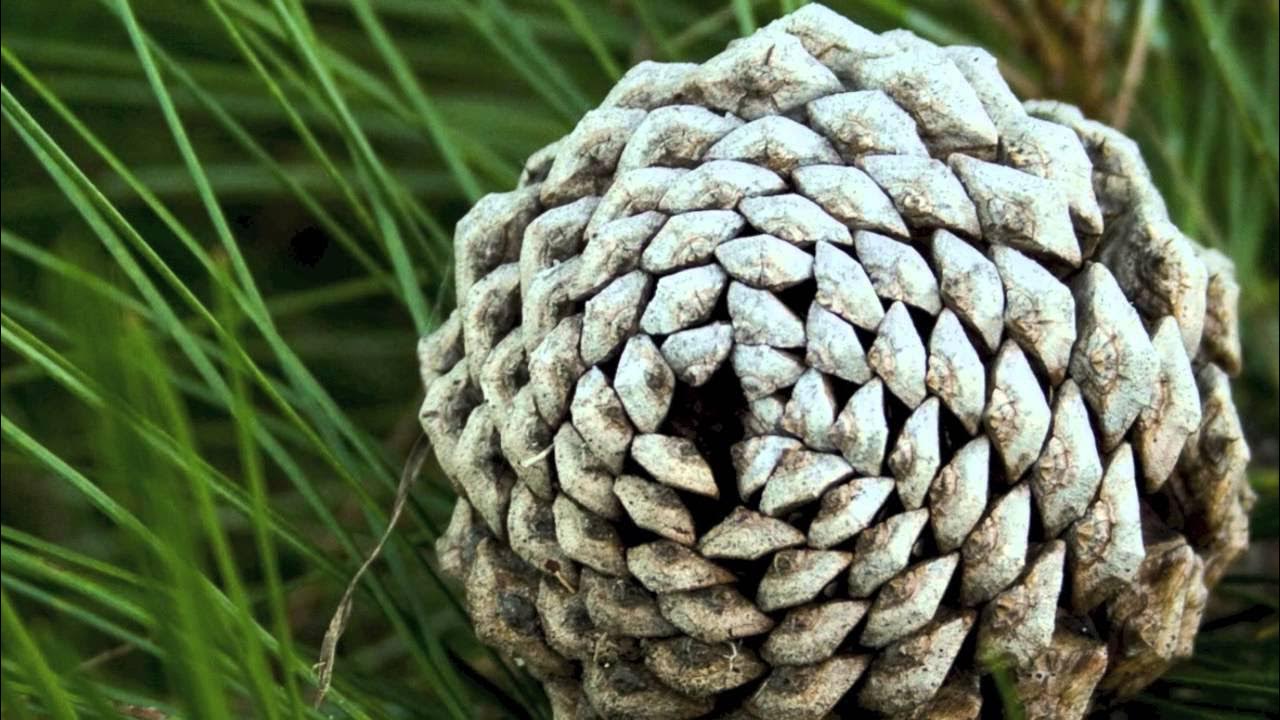The Mind-Blowing Mathematics of Sunflowers - Instant Egghead #59
Summary
TLDRThis video script explores the fascinating growth of rabbit colonies, illustrating it through the Fibonacci Sequence, a mathematical pattern found in nature. It explains how this sequence, introduced by Fibonacci 800 years ago, not only predicts rabbit population growth but also appears in the spirals of sunflowers and pine cones. The script delves into the Golden Angle and the Golden Ratio, showing their connection to the Fibonacci Sequence and their role in optimizing space for growth in sunflowers. The video concludes by highlighting the beauty and mathematical order found in nature.
Takeaways
- 🐰 The growth of a rabbit colony can be modeled by the Fibonacci Sequence, where each new generation is the sum of the two preceding ones.
- 📈 The Fibonacci Sequence starts with a single pair of rabbits and grows exponentially: 1, 1, 2, 3, 5, 8, 13, 21, 34, 55, and so on.
- 🌻 The Fibonacci Sequence is not only theoretical but also observed in nature, such as the spiral patterns in sunflowers.
- 🔢 Sunflowers often have spirals corresponding to consecutive Fibonacci numbers, like 34 and 55, or even larger numbers like 89 and 144.
- 🌲 Similar patterns of Fibonacci numbers are found in pine cones, with 8 and 13 spirals being common.
- 💡 The arrangement of spirals in sunflowers and pine cones is not coincidental but serves a biological purpose, optimizing space for growth.
- 🌟 The 'Golden Angle' of 137.5 degrees is the angle at which new florets in a sunflower emerge, maximizing space for each to grow.
- 🐍 The Golden Angle is derived from the Golden Ratio, also known as Phi, which is closely related to the Fibonacci Sequence.
- 🔢 Dividing any number in the Fibonacci Sequence by the one preceding it approximates the Golden Ratio.
- 🌺 The mathematical relationship between the Golden Angle, the Golden Ratio, and the Fibonacci Sequence results in the observed spiral patterns in sunflowers.
- 📚 The concept of the Fibonacci Sequence in nature was introduced by Leonardo of Pisa, known as Fibonacci, about 800 years ago.
Q & A
What is the Fibonacci Sequence, and how does it relate to the growth of a rabbit colony?
-The Fibonacci Sequence is a series of numbers where each number is the sum of the two preceding ones, usually starting with 0 and 1. In the context of a rabbit colony, the sequence represents the exponential growth of the population, where each mature pair produces a new litter, contributing to the next generation.
How does the Fibonacci Sequence appear in nature, specifically in sunflowers?
-In nature, the Fibonacci Sequence appears in the arrangement of seeds in sunflowers, where the number of spirals in one direction and the other often correspond to consecutive Fibonacci numbers. This pattern optimizes the use of space, allowing each seed to have the maximum area to grow.
What is the Golden Angle, and how is it connected to the Fibonacci Sequence?
-The Golden Angle, approximately 137.5 degrees, is the angle at which new florets emerge in a growing sunflower to maximize space between them. It is derived from the Golden Ratio, which is closely related to the Fibonacci Sequence. The ratio of consecutive Fibonacci numbers approximates the Golden Ratio.
Why do real rabbits not breed as predictably as the Fibonacci Sequence suggests?
-Real rabbits do not breed as predictably as the Fibonacci Sequence because various factors such as environmental conditions, availability of resources, and predation affect their reproduction rates, which are not accounted for in the mathematical model.
Who introduced the Fibonacci Sequence, and in what context was it first presented?
-The Fibonacci Sequence was introduced by Leonardo of Pisa, known as Fibonacci, an Italian mathematician from the 13th century. He presented it in the context of a rabbit breeding problem to illustrate the concept of exponential growth.
How are pine cones related to the Fibonacci Sequence?
-Pine cones often display spiral patterns with the number of spirals corresponding to consecutive Fibonacci numbers, similar to sunflowers. This pattern is believed to optimize space and resources for seed development.
What is the Golden Ratio, and how does it relate to the Fibonacci Sequence?
-The Golden Ratio, often symbolized by the Greek letter Phi (Φ), is a mathematical constant approximately equal to 1.618. It is closely related to the Fibonacci Sequence because the ratio of consecutive Fibonacci numbers tends to converge towards the Golden Ratio as the sequence progresses.
Why is the Fibonacci Sequence significant in understanding patterns in nature?
-The Fibonacci Sequence is significant in nature because it often appears in patterns that optimize growth and resource distribution, such as in the arrangement of leaves on a stem, the branching of trees, and the spirals of seeds in sunflowers.
How does the Fibonacci Sequence illustrate exponential growth?
-The Fibonacci Sequence illustrates exponential growth by showing how each number is the sum of the two preceding ones, which results in a rapid increase in the sequence's values over time, reflecting the compounding effect seen in biological populations and other natural phenomena.
What are some other examples of the Fibonacci Sequence in nature besides sunflowers and pine cones?
-Other examples of the Fibonacci Sequence in nature include the arrangement of leaves on a stem, the branching pattern of trees, the fruitlets of a pineapple, and the spiral pattern of a nautilus shell.
Outlines

此内容仅限付费用户访问。 请升级后访问。
立即升级Mindmap

此内容仅限付费用户访问。 请升级后访问。
立即升级Keywords

此内容仅限付费用户访问。 请升级后访问。
立即升级Highlights

此内容仅限付费用户访问。 请升级后访问。
立即升级Transcripts

此内容仅限付费用户访问。 请升级后访问。
立即升级浏览更多相关视频

Fibonacci Sequence in Nature

GEC104 Video Lecture 1 - Mathematics in our World (Part 2): Fibonacci Sequence and Golden Ratio

Unit 1 | Lesson 3: The Fibonacci Sequence (Mathematics in the Modern World)

Fibonacci and the Golden Mean

Evidence for God: The Fibonacci Sequence

Fibonacci Sequence and Golden Ratio || Mathematics in the Modern World
5.0 / 5 (0 votes)
